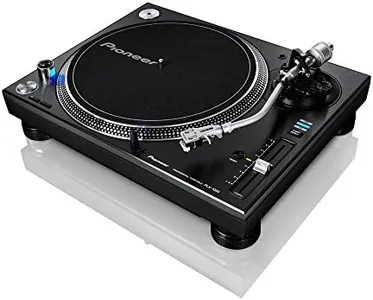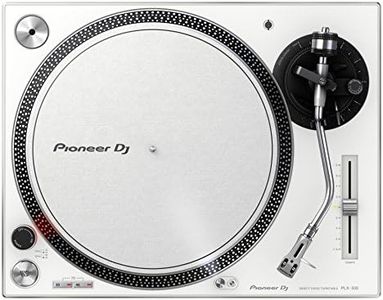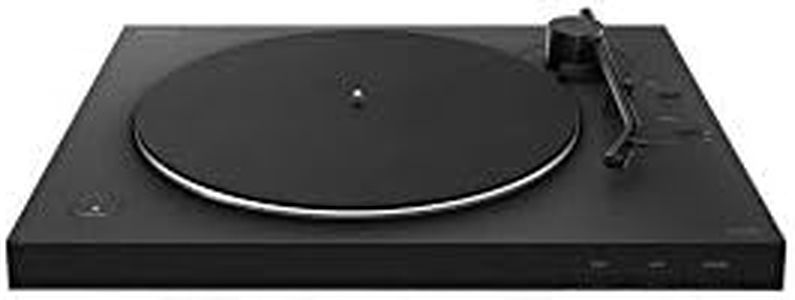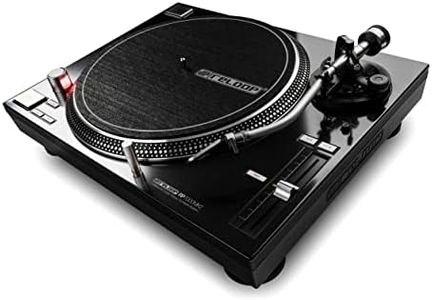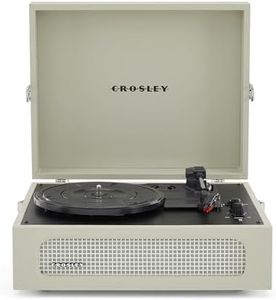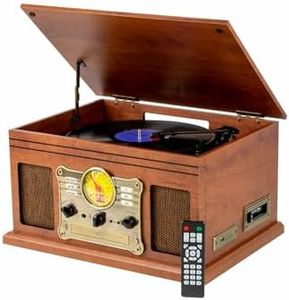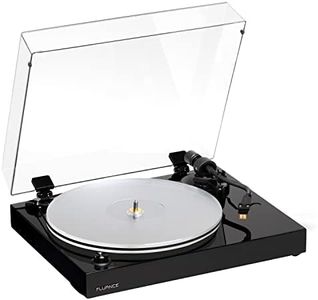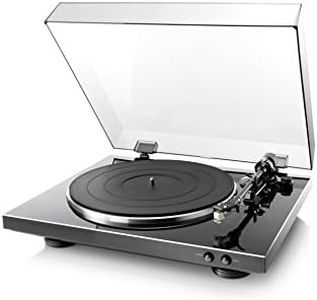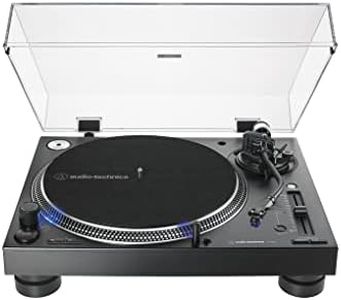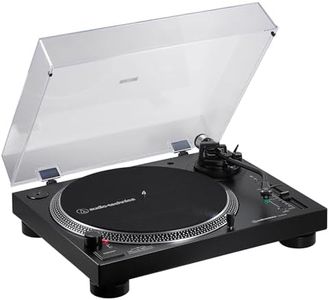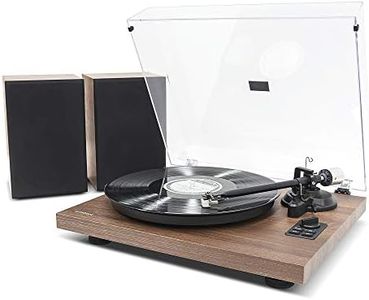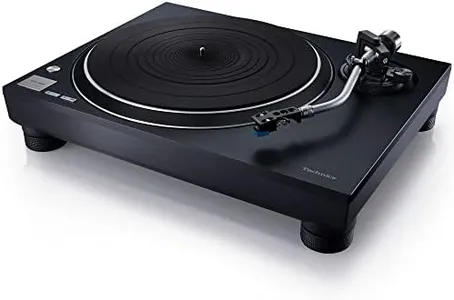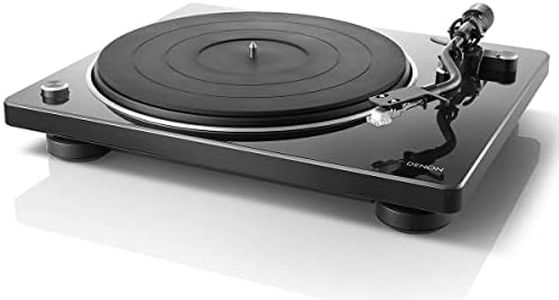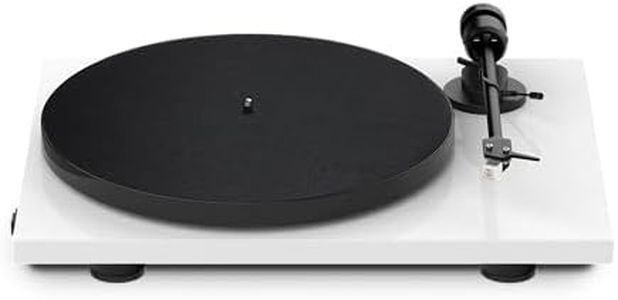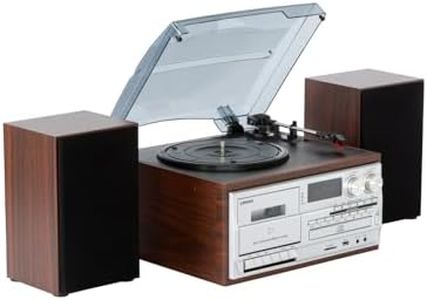We Use CookiesWe use cookies to enhance the security, performance,
functionality and for analytical and promotional activities. By continuing to browse this site you
are agreeing to our privacy policy
10 Best Turntables
From leading brands and best sellers available on the web.#6
mbeat
11%OFF
MB-PT-28 Bluetooth Hi-Fi Vinyl Turntable Record Player with 36W Bookshelf Speakers, Supports 33/45 RPM Vinyl Record, Bluetooth Streaming via Smart Devices, Pre-installed Hi Fidelity MMC Stylus, Solid Metal Platter, Removable Dust Cover and Adjustable Counterweight and Anti-skating weight, Including Feature-Rich Audio Outputs, Line-in Pre-amplifier, USB Recording Function
Buying Guide for the Best Turntables
Choosing a turntable can be quite enjoyable, especially with the recent resurgence in vinyl records. A good turntable provides a balance between sound quality, build, and features that fit your personal listening style. Before you decide, think about where you'll use it, how you plan to listen (casually or with high-end speakers), and if you'll want extra features like Bluetooth or the ability to digitize your records. Understanding the key elements of a turntable helps you select one that will give you the best experience based on how you use your music system.Drive TypeDrive type refers to how the platter—the part that spins your record—is powered. The two most common types are belt-drive and direct-drive. Belt-drive turntables use a rubber belt to spin the platter, often resulting in less vibration and better sound for home listening, particularly for audiophiles. Direct-drive models connect the motor directly to the platter and are more robust, commonly favored by DJs for their durability and fast start/stop. If you want super-smooth, pure sound in your living room or study, belt-drive is likely preferable. If you expect to do any mixing, scratching, or want a more rugged design, direct-drive could be a better pick.
Manual vs. Automatic OperationThis specification refers to how much of the record-playing process is handled by the turntable. Manual turntables require you to place the tonearm on the record and lift it off when it finishes, so you have maximum control—ideal if you enjoy the ritual and don't mind handling the stylus yourself. Semi-automatic models automate either the start or stop, and fully automatic units handle both, so you just press a button and let the turntable do its thing—great for convenience or if you’re worried about damaging records by hand. Your comfort and how much you want to interact with the machine will guide your choice here.
Phono PreampA phono preamp is an electronic component that amplifies the very quiet signal from a turntable to a level that your audio system or speakers can use. Some turntables have a built-in phono preamp, allowing you to plug them directly into most modern speakers or amplifiers. Others require an external preamp, which can be an extra box and expense but sometimes means higher audio quality. If you have a modern stereo or powered speakers, a built-in preamp is usually the simplest. If you want ultimate sound customization or have an older amplifier with a phono input, you might prefer a turntable without a built-in preamp.
Cartridge TypeThe cartridge holds the stylus, which reads the grooves in your record. Cartridges are generally either fixed (permanently attached to the tonearm) or replaceable. Replaceable cartridges allow for upgrades or replacements for better performance or different sound signatures. Beginners or those who want less fuss may prefer a fixed cartridge since it keeps things simple and ready out of the box. If you’re a hobbyist or improvement-minded listener, the ability to swap cartridges gives you flexibility to experiment and potentially improves your sound.
Speeds SupportedTurntables typically play records at 33⅓ RPM and 45 RPM, with some models also allowing for 78 RPM. These numbers refer to how fast the record spins and match different types of records—most albums use 33⅓ RPM, singles and some older releases use 45 RPM, and some vintage records need 78 RPM. Consider what types of vinyl you already own or plan to collect. If you're mainly buying standard LPs, 33⅓ and 45 RPM are a must; 78 RPM is only needed for rare, older records.
Build Quality and MaterialsThe construction of a turntable—such as the platter's weight, the plinth (base) material, and the tonearm's sturdiness—impacts both how it sounds and how long it lasts. Heavier, well-damped platters and bases help prevent unwanted vibrations for cleaner sound. Sturdy tonearms reduce skip and ensure smoother tracking. If you’re after the best listening experience, opt for a model with solid, robust materials. For casual or portable use, lighter designs may be acceptable, but pay attention to stability and durability.
Additional FeaturesModern turntables often offer extra features like Bluetooth connection, USB outputs for digitizing records, or built-in speakers. Bluetooth lets you play vinyl wirelessly through compatible speakers, while USB allows easy recording of records to your computer. Built-in speakers are handy if you don’t want to invest in an audio system. Decide which features matter for your lifestyle—if your goal is pure analog listening, fewer extras can be better; if you like convenience or tech integration, these additions become valuable.
